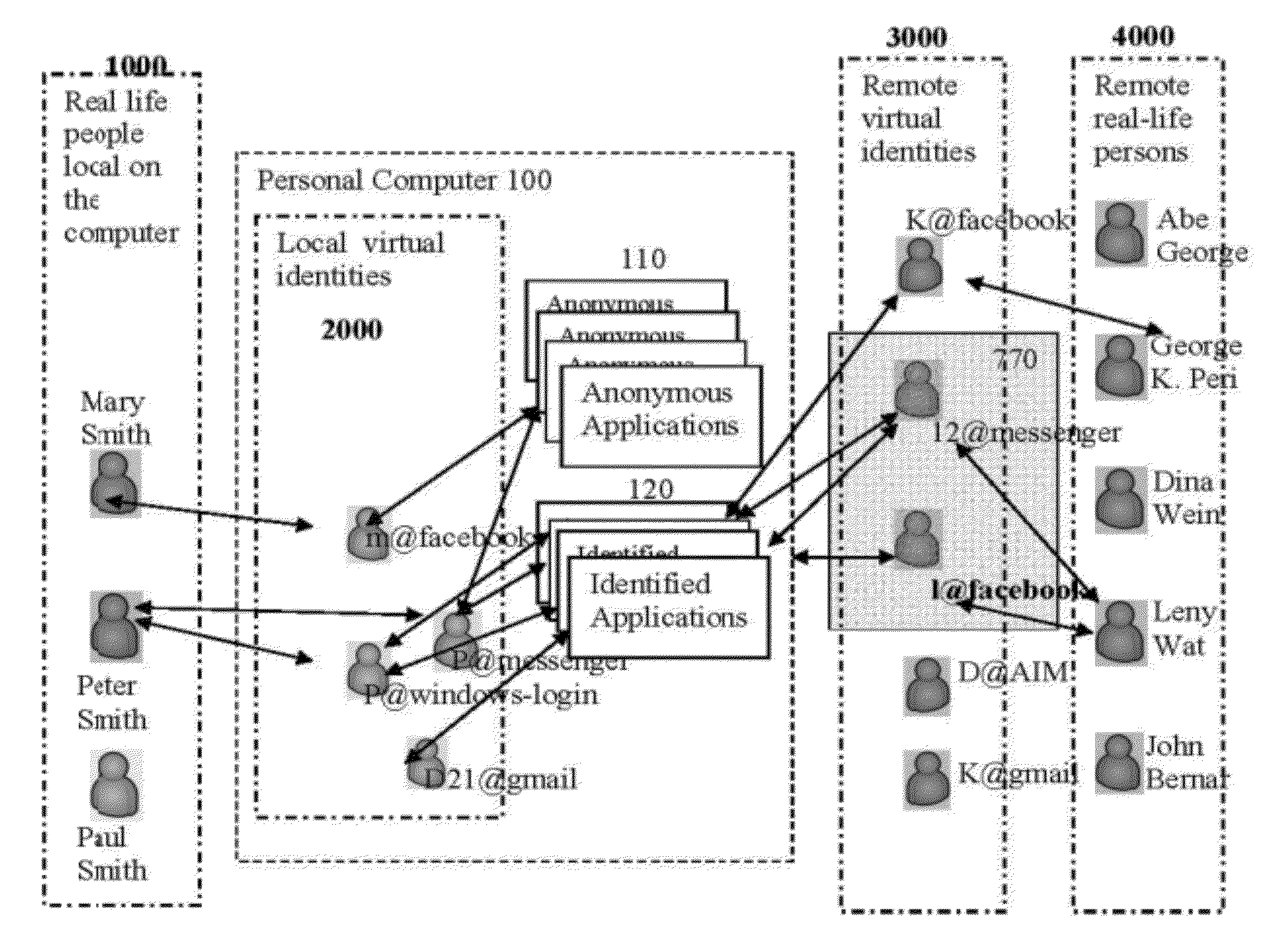Methods and systems for managing virtual identities
a virtual identity and management system technology, applied in the field of methods and systems for managing virtual identities, can solve problems such as unrealistic requests, and achieve the effects of improving site usability and productivity, increasing sales and customer satisfaction
- Summary
- Abstract
- Description
- Claims
- Application Information
AI Technical Summary
Benefits of technology
Problems solved by technology
Method used
Image
Examples
usage example i
Decide Who the Current User is
[0073]In this example the system is used to decide who the current user is, out of the possible (typically small number, up to ten users) real-life users. Such a decision may be valuable for various reasons (access control, selective monitoring).
[0074]The fingerprint in this case can be based on a typing sample as well as many additional samples (lingual, mouse moves, etc'). In this case, biometric parameters of mouse sensitivity speed of clicking, and usage of various mouse buttons can be used as a partial parameter set; additional parameters can be derived from word processing and word insertion applications—typing speed, vocabulary deviations, spelling mistakes distribution, and language level (as is commonly observed by Microsoft Word™) can be used. In this example, the IMS is an add-on to the access control system that is embedded in common systems, and is used to resolve the current-user at any given moment.
usage example ii
Decide Whether User A on IM and User B and C on a Social Network are the “Same Person”
[0075]In this example the system is used to decide whether two or more social messaging buddies (friends) of a local user are actually a single person. A possible way is to compare two fingerprints at a time. Compare A's fingerprint with B's, and then compare with C's and decide if they are close enough. Alternatively, the suggested system associates A with a target identity (virtual anchor or real-life person), and accumulates fingerprinting information for this new entity, which is referred to as an Anchor Virtual Identity. A similar process may take place regarding B. In this case, the process seems redundant however, if later a question arises about a virtual identity C, it can be compared against the joined A-B group, namely, the Anchor Virtual Identity. Even if there is a match, and all three virtual identities are “the same person”, there is no necessarily a “real-life-person” association. I...
usage example iii
Avoiding Identity Theft
[0077]In this example a message is intentionally sent in a social messaging channel pretending to be somebody else, in order to achieve:[0078]Increase the trust in the message content, based on the owner person's credibility[0079]Cause damage to the person who is supposedly sending the message, based on the content of the message.
[0080]In this case the sample is the message itself, and the system is required to decide whether the issuer of the message is has the same fingerprint (similar enough) to that of the person owning the account. The suggested system can optionally be augmented also to decide how to handle the fraudulent cases, once the IMS triggers the response.
PUM
 Login to View More
Login to View More Abstract
Description
Claims
Application Information
 Login to View More
Login to View More - R&D
- Intellectual Property
- Life Sciences
- Materials
- Tech Scout
- Unparalleled Data Quality
- Higher Quality Content
- 60% Fewer Hallucinations
Browse by: Latest US Patents, China's latest patents, Technical Efficacy Thesaurus, Application Domain, Technology Topic, Popular Technical Reports.
© 2025 PatSnap. All rights reserved.Legal|Privacy policy|Modern Slavery Act Transparency Statement|Sitemap|About US| Contact US: help@patsnap.com



